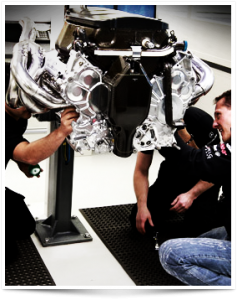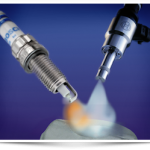Keeping Those Injectors Working
Keep you gas tank full, especially if the car sits for extended periods. This will help keep water out of the fuel system. Add a water remover about twice a year.
Use a good brand of in-the-tank fuel injector cleaner to help keep your injectors clean. Use them a couple times a year, and only as directed… using more than recommended amounts can damage the injector coil insulation and is just a waste.
Change your fuel filter per manufacturer recommendations. Inspect any fuel lines for hardening or deterioration.
Some injector’s terminals are prone to corrosion. Clean and use silicone grease in them. Older connectors can get brittle due to the heat, replace damaged connectors if needed.
If your fuel injectors are removed, it may be a good time to send them to us for servicing. At a minimum, replace the o-rings and seals. Don’t forget a little grease on the o-rings/insulators to ease installation.
Never soak fuel injectors in harsh chemicals like; injector cleaners, Seafoam, acetone, etc. This can cause damage to the coil insulation and internal seals. Besides, you can’t get them clean by just soaking.
Trying to clean them in your wife’s jewelry ultrasonic cleaning tank usually won’t work well either. Any form of cleaning should be followed by testing to verify the results, which can only be done on our state of the art ASNU fuel injector diagnosis machine.
Don’t use excessive force when installing injectors into the rail or manifold or the o-rings may get damaged. Use clean motor oil or grease to lube the o-rings and rotate the injector during installation. If it doesn’t want to go in, remove it and try again.
The pintle cap is the plastic piece on the bottom of the injector. It protects the “business end” of the injector, holds the o-ring, and insulates the tip. Be careful not to damage them since they become brittle with age.
Don’t let injectors dry out when they are out of the car. Store them in a plastic bag and keep them indoors. Be aware that they may stick closed after a time.
A 9 volt battery can be used to check for stuck injectors, listen for a click. Don’t use the car’s battery for testing, it can overheat the injector coil, (especially low impedance injectors). Just because an injector “clicks”, it doesn’t mean that it flows correctly, it just indicates it’s not stuck.
If injectors are stuck after sitting for a short time, sometimes a “tap” with a small hammer on the metal body can free it. Don’t break anything… I said “tap”. If that doesn’t work, send them to us.
It may be a good idea to paint the metal body of the injectors to keep them from rusting. Standard engine paint works well and can be purchased at your local auto parts store.














